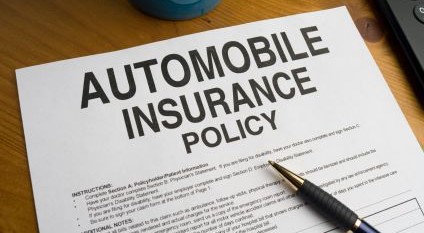Florida has the most uninsured drivers. Everyone needs UM. (Uninsured Motorist coverage)
Posted By Darrigo & Diaz

According to multiple studies, Florida ranks first in the United States for number of uninsured drivers.1-3 An estimated 5 million Florida drivers either have no insurance or insufficient insurance.
This means that if you get into an accident in Florida, there’s about a one in four chance it will be with an uninsured driver. If this occurs, you will have to pay for your car repairs, medical bills, and any other accident-related expenses out of your own pocket—unless, you have uninsured or underinsured motorist insurance.
Florida’s uninsured driver problem
Florida is a no-fault insurance state, meaning insurance agencies cover minor accidents involving their own policyholders. Under Florida law, drivers are required to buy a minimum of $10,000 in personal injury protection (PIP) insurance. This insurance will cover your accident-related expenses up to $10,000. However, if you require more money than $10,000 to pay for your car repairs, medical bills, lost wages and pain and suffering (which is extremely likely), you must file a claim against the at-fault driver.
What if you’re injured by an uninsured driver?
If you’re hit by an uninsured driver who cannot pay for any or all of your accident-related expenses, then you may be responsible for paying for your car repairs, medical bills, and lost wages out of pocket—unless you have underinsured/uninsured motorist (UM) coverage.
What exactly is this coverage? UM coverage pays you for medical bills and lost wages if you are hit by another driver who doesn’t have insurance or doesn’t have enough insurance to cover those costs.
UM coverage generally only adds a few dollars to your monthly premiums, but the amount of coverage it gives you can be life-changing in the result of a tragic accident.
Three reasons to have UM coverage
- 25% of Florida’s drivers are uninsured.
A lot of drivers on Florida’s roads do not have insurance. Most of these drivers are not carrying insurance because they are tight on cash . . . which means they probably won’t be able to pay for your accident-related expenses. - Accidents are very expensive.
There are a number of financial costs that are often associated with the aftermath of an auto accident. From medical bills to lost wages and lifelong care services, costs related to serious car accidents can easily exceed $100,000. - You want hit-and-run driver coverage.
When a driver leaves the scene of an accident illegally, the injured person doesn’t have the hit-and-run driver’s insurance information to file a claim for damages. In situations involving significant injuries that exceed your own PIP coverage, the law treats the hit-and-run driver as an uninsured motorist.
Do you have enough UM/UIM coverage?
Most experts recommend that your UM coverage match your liability coverage. For example, if you have $100,000 in liability protection for injuries you might cause to other people, you should also have $100,000 in UM protection to cover your own family and property.
Your insurance agent can give you a breakdown of what it would cost to add or increase your policy limits. You may be surprised at how affordable it is to bump up your UM coverage.
How our experienced Tampa accident attorneys can help
If you suffered serious injuries in an accident with an uninsured or underinsured driver, you should seek the help of a knowledgeable Tampa auto accident attorney with local expertise and direct experience settling hundreds of challenging accident cases at the highest value for accident victims and their families in the Tampa Bay area.
We are here to help you and your family. Contact us by phone at 813-774-3341 or by using our online contact form.
We have been serving clients throughout the Tampa Bay area since 1999. Led by Board Certified Civil Trial Attorney, Nadine Diaz, our firm is recognized as a member of the Multi-Million Dollar Advocates Forum®.
References:
1Insurance Research Council (IRC), 2015, found that 13% of all U.S. motorists were uninsured in 2015, up from 12.3% in 2010 after a seven-year decline.
